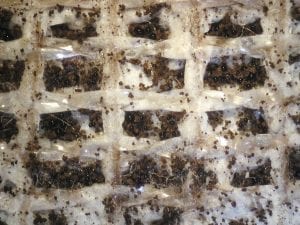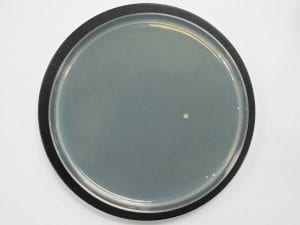Work with An Expert
Ultra-Fresh technology is currently used in flooring products around the world. Interested in learning more about some of our flooring partnerships?
WHO WE WORK WITHFlooring, carpets, and rugs can frequently be a source of unwanted bacteria and fungi. Fungi can flourish in moist areas under soft flooring materials and create musty odors and loss of product integrity.
Carpet, area rugs, and bathmats can trap dirt and moisture within the face fibers, leading to odors and staining from bacterial and fungal growth if not properly cleaned or dried.
Hard surfaces become susceptible to bacterial and/or fungal growth when the topcoat and wear layers are worn away over time, whereas adhesives used in flooring can also support fungal growth which can lead to eventual discoloration and deterioration.
Antimicrobial flooring offers many benefits.
"Difference between antimicrobial and antibacterial?" and other blog articles can be found here.
To manufacture antimicrobial carpet or area rugs, Ultra-Fresh can be foamed onto or extruded directly into fibers to prevent bacterial growth on the carpet surface.
For added control against mold and mildew, Ultra-Fresh products can be incorporated into the latex or secondary backing.
Additional antimicrobial protection can be achieved by using multiple treatments with the use of an Ultra-Fresh treated foam underlay.
An antimicrobial bathmat is made by applying the treatment topically to the fabric or face fibers. If the bathmat contains an internal memory foam layer, the Ultra-Fresh is built directly into the foam structure, providing long-lasting protection from mold and mildew under high humidity conditions.
Hard surfaces can also be protected by adding Ultra-Fresh into the topcoat or wear layers, as well as the backing.
Once applied, Ultra-Fresh becomes a permanent part of the antimicrobial flooring or antimicrobial carpet structure and will extend the useful life of the product.
Silver-based antimicrobials are commonly used when the treatment is built directly into the carpet fibers via an extrusion process and creates an antimicrobial carpet.
Zinc pyrithione and silane quat compounds are often used when the treatment is topically applied to the face fibers via a foaming process.
To treat the backing, zinc pyrithione, thiabendazole, and isothiazolinone based technologies are often selected.
Zinc pyrithione provides strong antimicrobial properties while thiabendazole and isothiazolinones offer supreme antifungal protection, keeping carpet backing free from mold and mildew growth.
To provide antimicrobial activity to the topcoat of hard surface flooring, silver or isothiazolinone based options are often selected.
Silver, thiabendazole, and isothiazolinone additive options are again popular choices due to their ability to withstand the severe processing conditions that these types of flooring products endure.
The 10,10′-oxybisphenox-arsine or “OBPA” chemical was historically the product of choice for flexible vinyl flooring.
This arsenic-based biocide was preferred due to low cost and its antimicrobial effectiveness.
Today, OBPA cannot be used in Europe since it is not BPR listed and goods imported into the EU are not allowed to contain this biocide.
As a result, a generation of newer, greener, and equally effective antimicrobial options have been developed to replace OBPA.
The most common additives used to manufacture antimicrobial vinyl flooring include various isothiazolinone, zinc pyrithione, thiabendazole, and silver antimicrobial treatments. Each active ingredient has its strengths and weaknesses.
For example; zinc and silver have strong bacterial efficacy at low concentrations, but higher levels are needed to achieve adequate fungal efficacy.
Others, such as isothiazolinone and thiabendazole, have robust fungal efficacy but are not as effective against bacteria.
Synergistic combinations of different actives can lower overall anti-microbial use levels, provide economical savings, and most importantly, deliver superior antimicrobial performance.
Other options such as IPBC and folpet are occasionally touted as possible substitutions for OBPA. However, IPBC causes severe yellowing of vinyl and other polymers over time, and folpet is listed on California's Proposition 65 as a carcinogen.
Read: Pink Stains on Vinyl: A Problem
The most popular type of flooring underlayment normally consists of polyurethane foam. To learn more about polyurethane foam application, please click here.
Other types of underlayment consist of recycled textile materials or thick nonwoven goods. Zinc pyrithione, thiabendazole, silane quat, or silver-based technologies are commonly used for these types of underlay options.
Many test methods developed by organizations such as the American Association of Textile Chemists and Colorists (AATCC); American Society for Testing and Materials (ASTM); International Organization for Standardization (ISO); and Japanese Industrial Standard (JIS) are available to evaluate antimicrobial performance.
Such standardized test methods are often developed for specific types of materials, end-uses, or antimicrobial technologies; therefore, choosing the correct test method is crucial.
Manufacturers looking to assess bacterial efficacy should use quantitative test methods such as the AATCC Method 174, Part II, or the ISO 20743 (JIS L 1902).
To test fungal efficacy, standardized antifungal test methods such as the AATCC Method 174, Part III, AATCC Method 30, Part III, or ASTM G21 are recommended.
Companies testing bacterial efficacy flooring should utilize bacterial test methods such as the ISO 22196 (JIS Z 2801).
For antimicrobial vinyl flooring, assessment against pink staining using the ASTM E1428 is recommended. Fungal efficacy is typically assessed using the AATCC Method 30, Part III, or the ASTM G21.
For more information regarding the best test methods to use for your flooring product, contact us!
The photos below are an example of the benefit of adding antimicrobial additives to carpet backing. Under the right conditions, mold and mildew can flourish by using the carpet latex as a favorite food source, especially when moisture becomes trapped underneath. Antimicrobials keep the area you don't see cleaner and helps flooring last longer.
Both carpet samples were tested using the AATCC Method 174, Part III. The test organism used was Aspergillus niger.
[caption id="attachment_1738" align="alignright" width="400" class="right"]

Latex carpet backing with Ultra-Fresh antimicrobial protection
[caption id="attachment_1741" align="alignleft" width="400" class="left"]

Latex carpet backing without antimicrobial protection
Below are two-time lapse videos.
The first shows an untreated rebond carpet underlay foam while testing using the AATCC Method 30 during the 7-day incubation period.
The second demonstrates the effectiveness of Ultra-Fresh antimicrobial treatment in the prevention of fungal growth on the rebond carpet pad.
[caption id="attachment_1741" align="alignleft" width="416"]
Untreated Rebound Foam
[caption id="attachment_1741" align="alignright" width="416"]
Treated rebound foam
The photos below demonstrate the effectiveness of antibacterial flooring.
Two LVT flooring surfaces, one "as is" (without an antibacterial additive for coatings) and the other with an antimicrobial surface coating, were tested using the ISO 22196.
The same amounts of bacteria (E. coli) were added to each sample and then incubated at 37C/98F (body temperature) for 24 hours.
Afterward, both surfaces were assessed to determine how many bacteria were remaining after the incubation period.
As seen in the below photo, heavy amounts of bacteria were recovered from the untreated surface coating. In contrast, hardly any bacteria were recovered from the antimicrobial flooring surface.
[caption id="attachment_2829" align="alignright" width="400"]

Antimicrobial flooring with Ultra-Fresh
[caption id="attachment_2826" align="alignleft" width="400"]

Surface without a bacterial resistant coating
The graph below is another way of demonstrating how antimicrobial floor coating performs over time. The same number of bacteria were added to a floor surface with an antibacterial coating and a surface with an untreated coating.
The samples were incubated for 24 hours at 98F/37C (body temperature). Afterward, the number of bacteria remaining on each surface was determined.

The bacteria on the untreated coated surface grew exponentially (from about 50,000 to over 500,000!).
However, the antimicrobial flooring surface with the Ultra-Fresh, had 99.9% fewer bacteria as compared to the flooring surface with the untreated coating after the same time period!*
*Subject to the performance properties of the specific active ingredient manufactured into your product. Treated product efficacy claims against specific microbes are dependant on the results of laboratory testing.
Want to learn more about how antimicrobial coated surfaces work?
Our antimicrobial products are commonly used in the following flooring and carpet end-use areas:
Below are just a few examples of the flooring companies we work with:
Please visit our "Who We Work With" page to see more of our partners.
For more information on which Ultra-Fresh antimicrobial treatments are suitable for your carpet or flooring applications, contact us!
[pdf_button text="Download Our Antimicrobial Flooring and Carpet PDF" url="" target="_blank"]
Ultra-Fresh technology is currently used in flooring products around the world. Interested in learning more about some of our flooring partnerships?
WHO WE WORK WITH